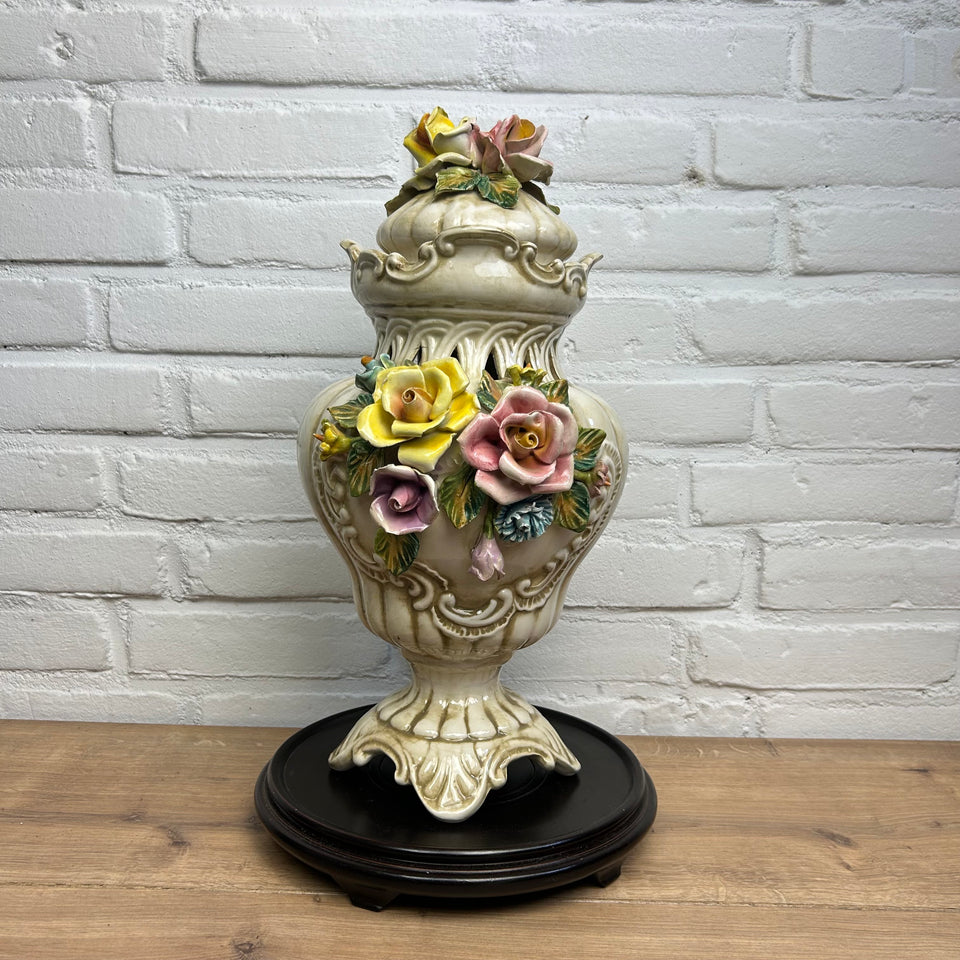
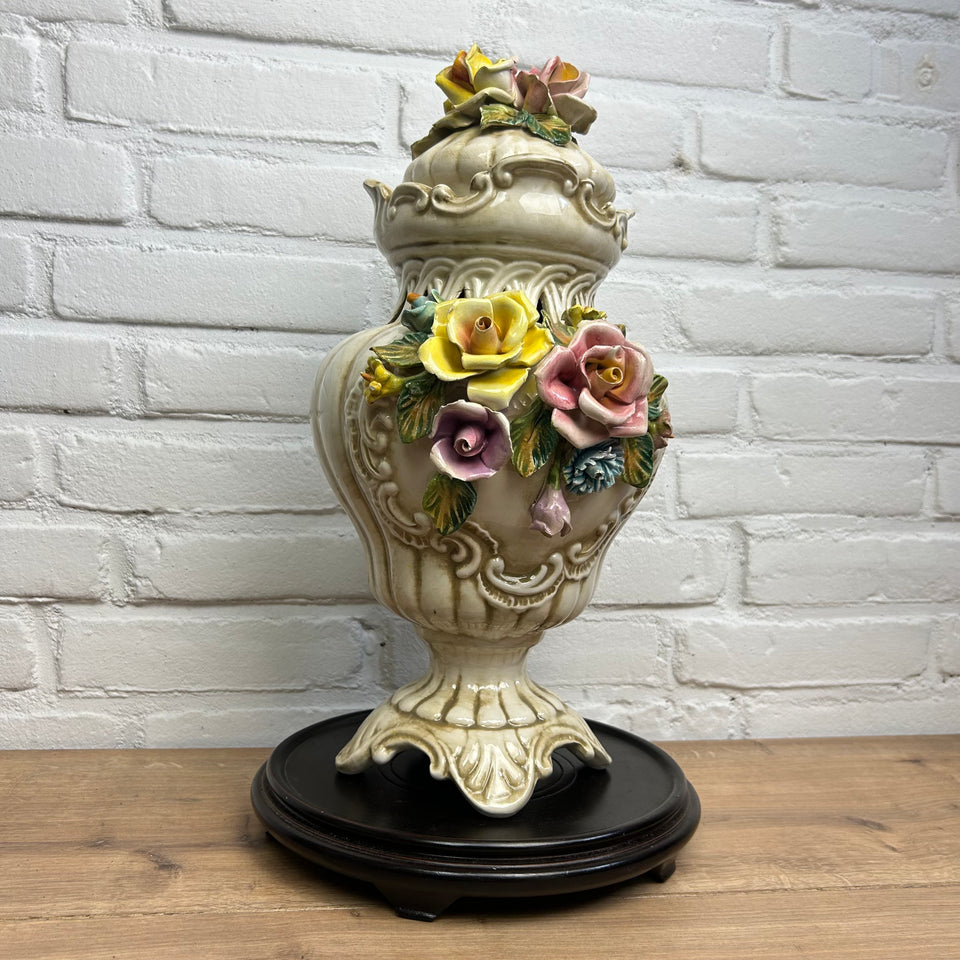
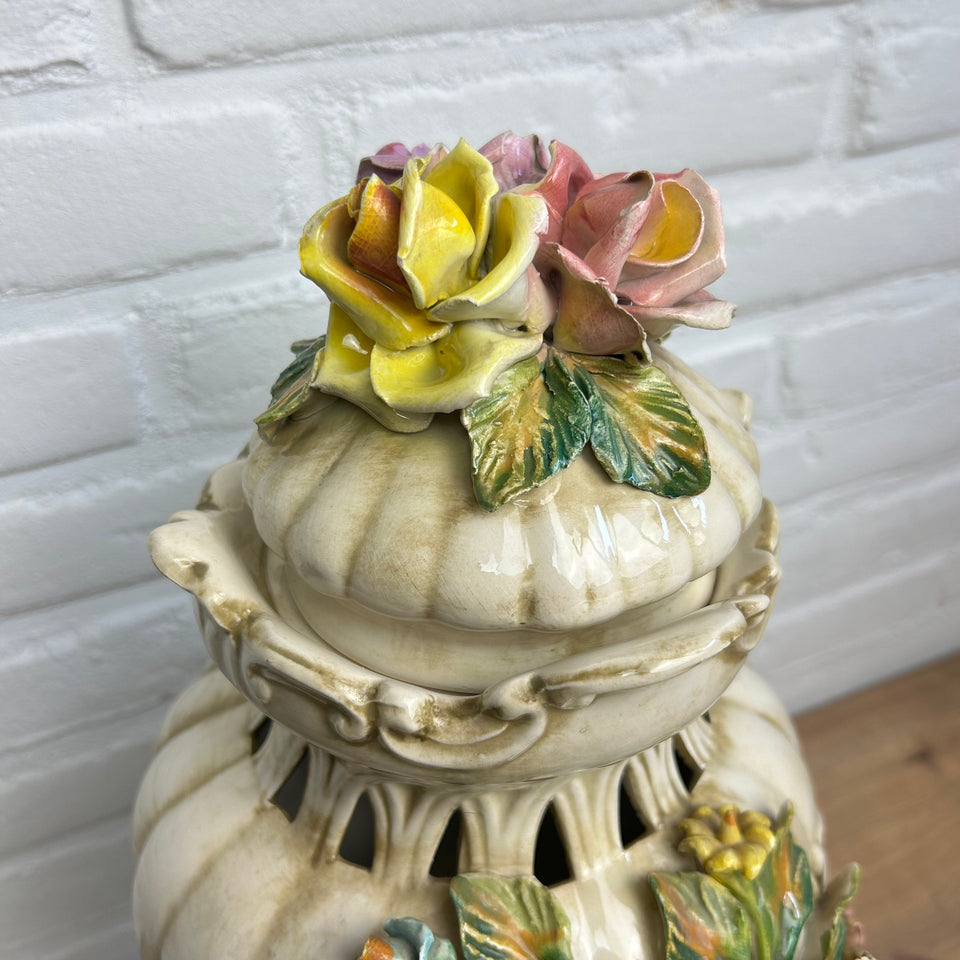
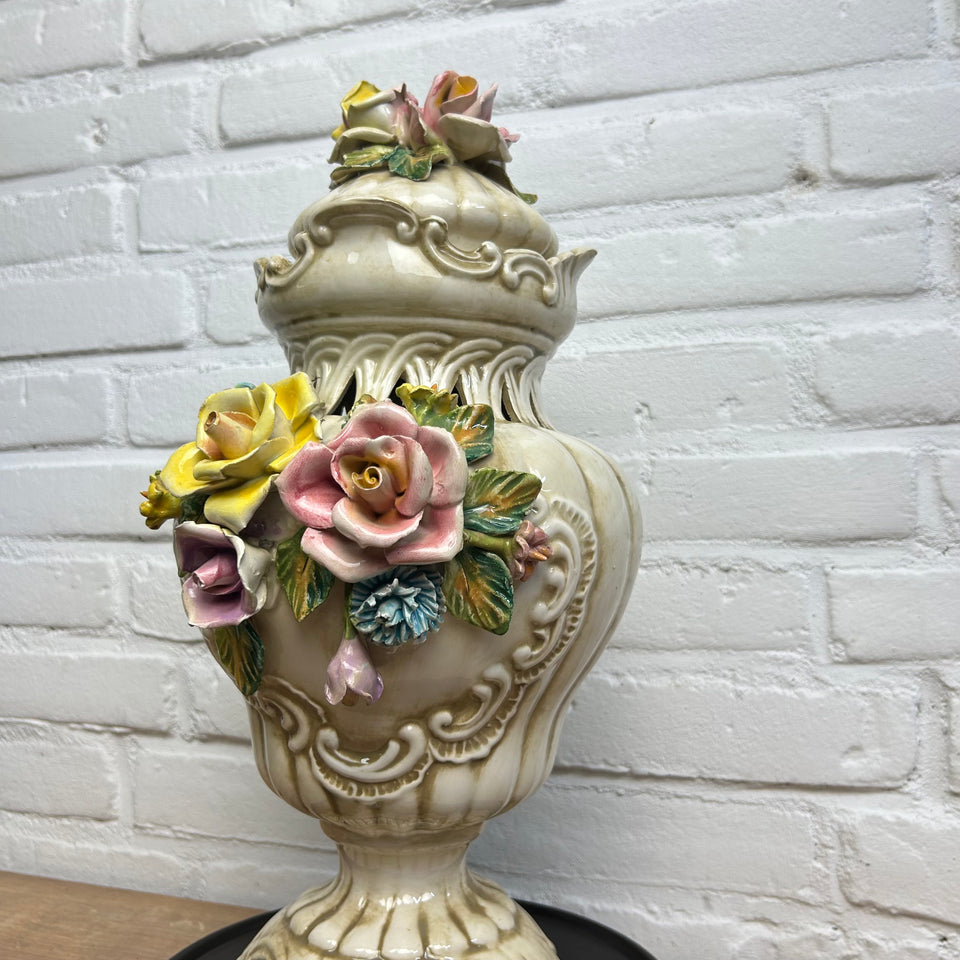
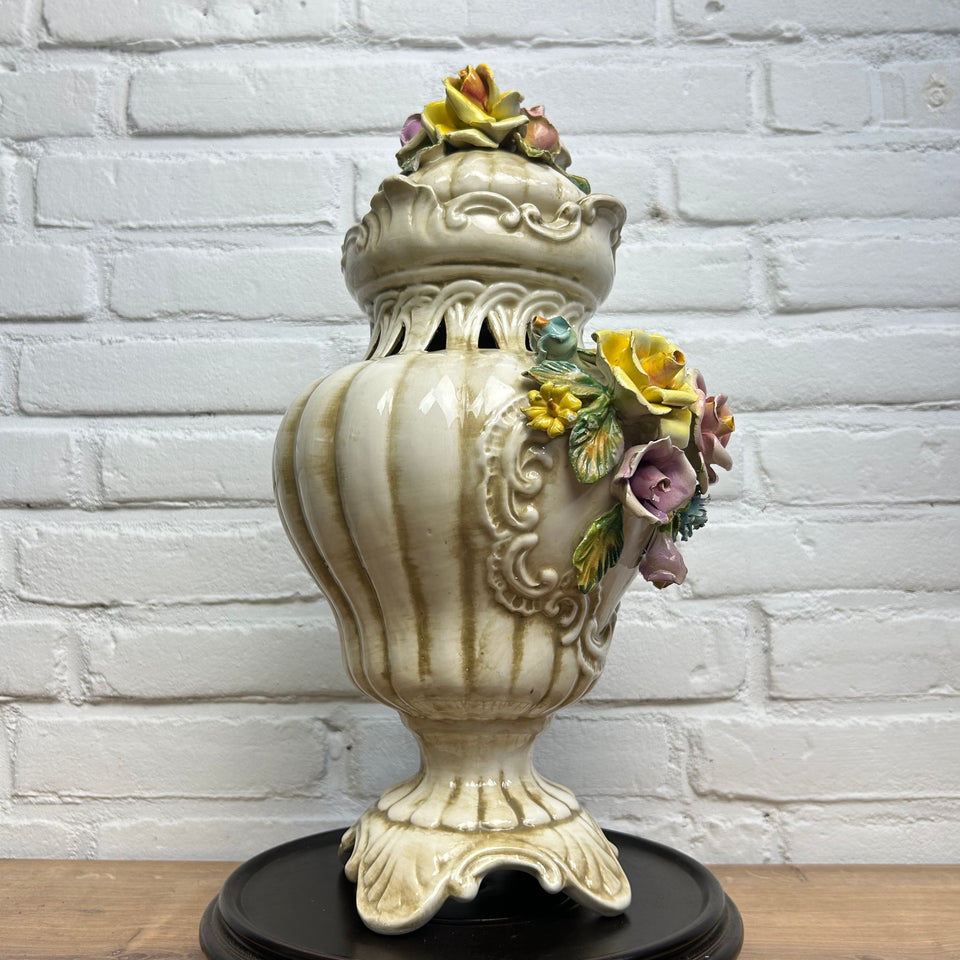
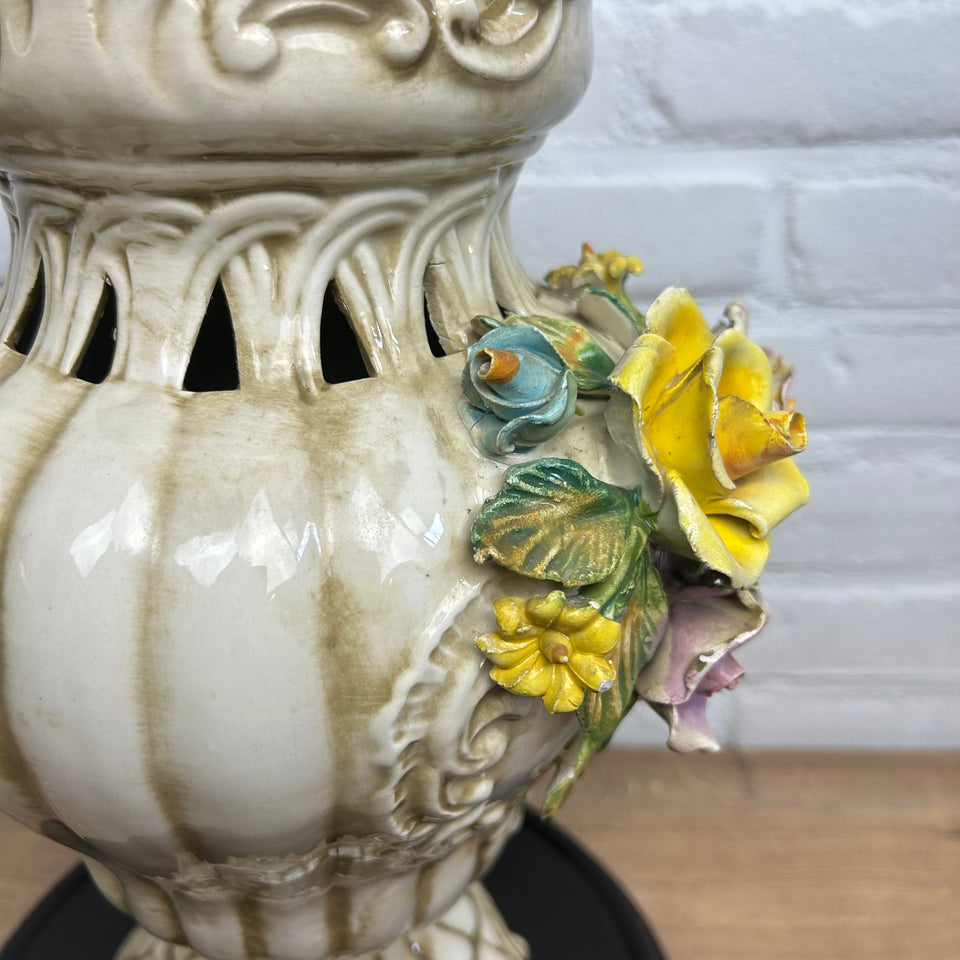
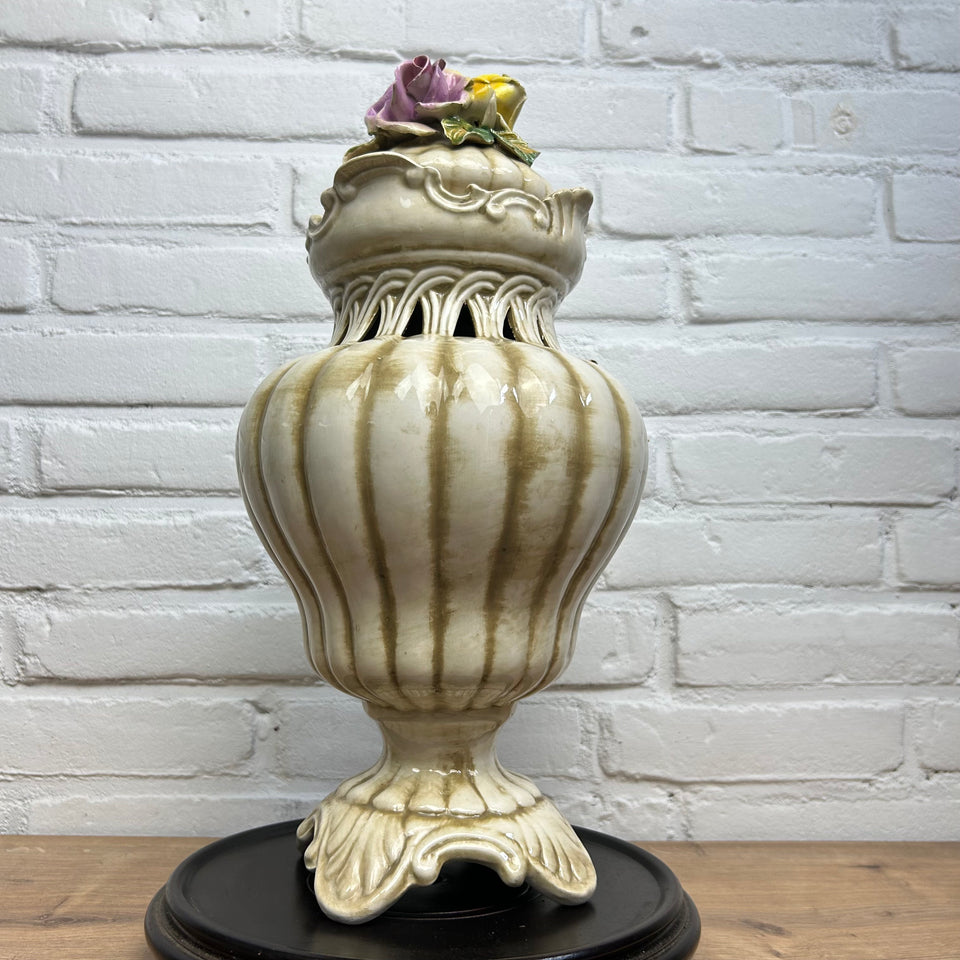
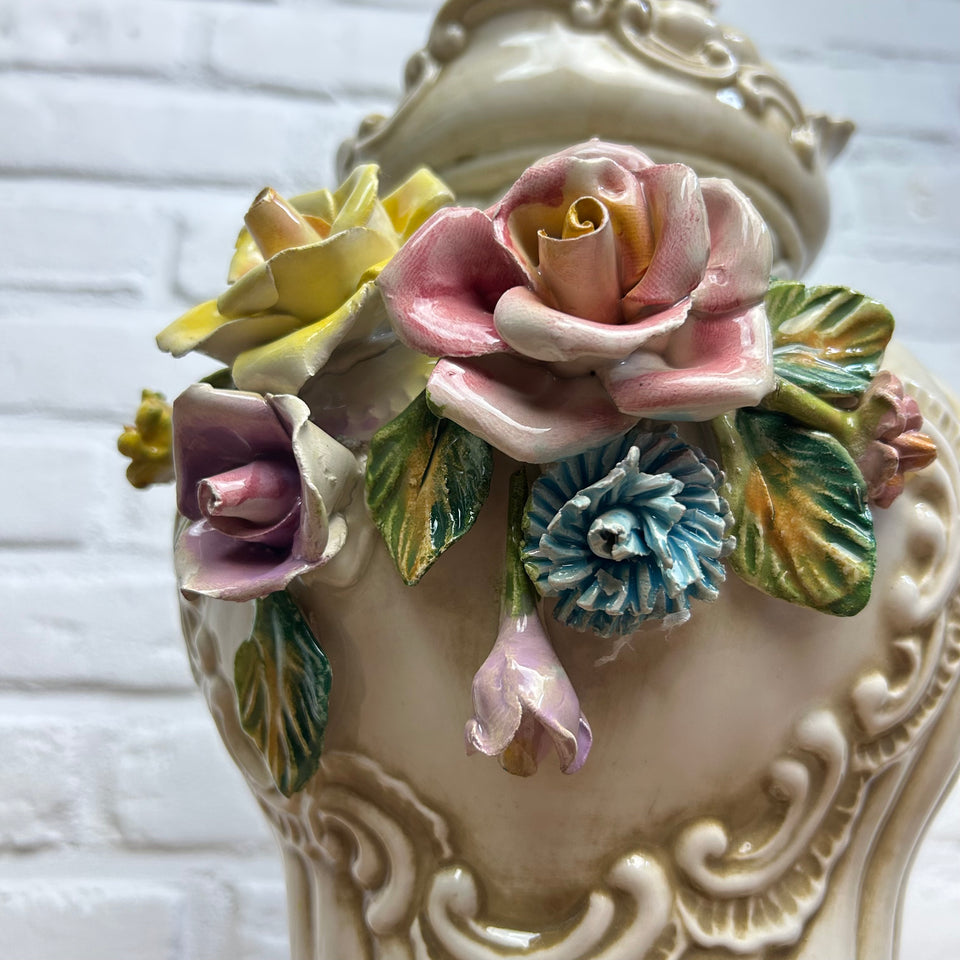
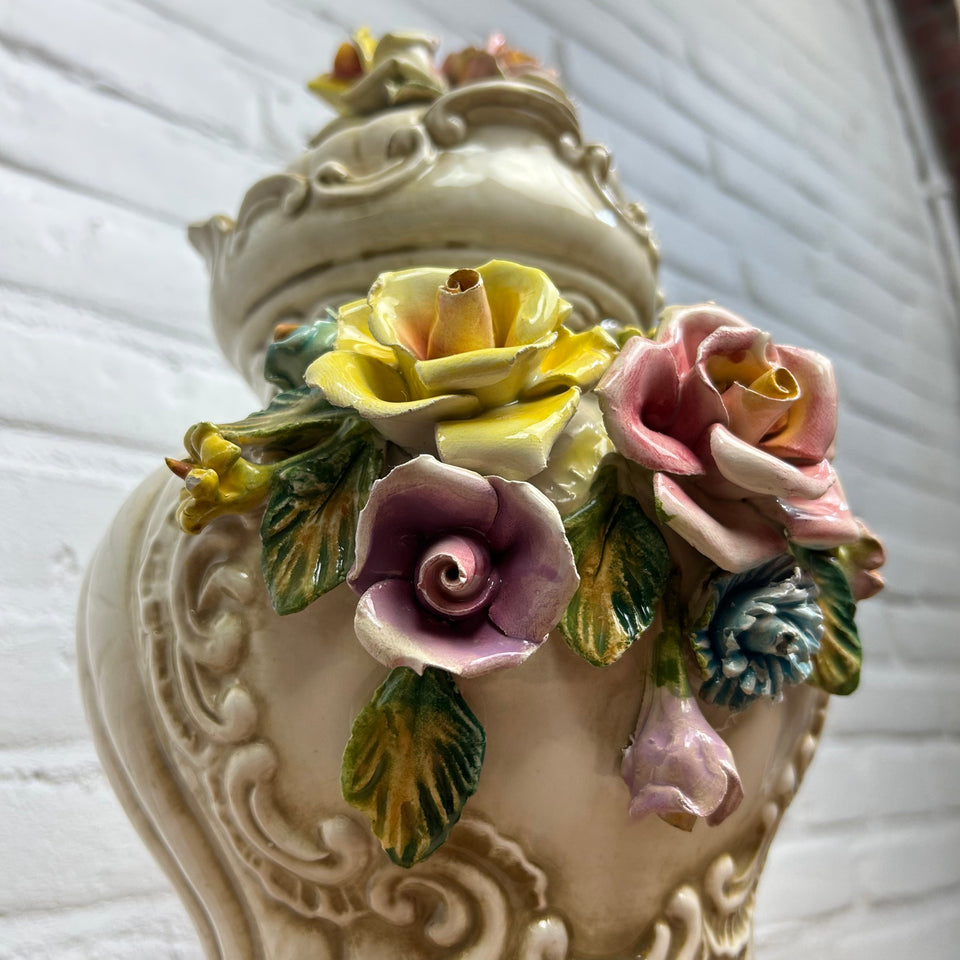
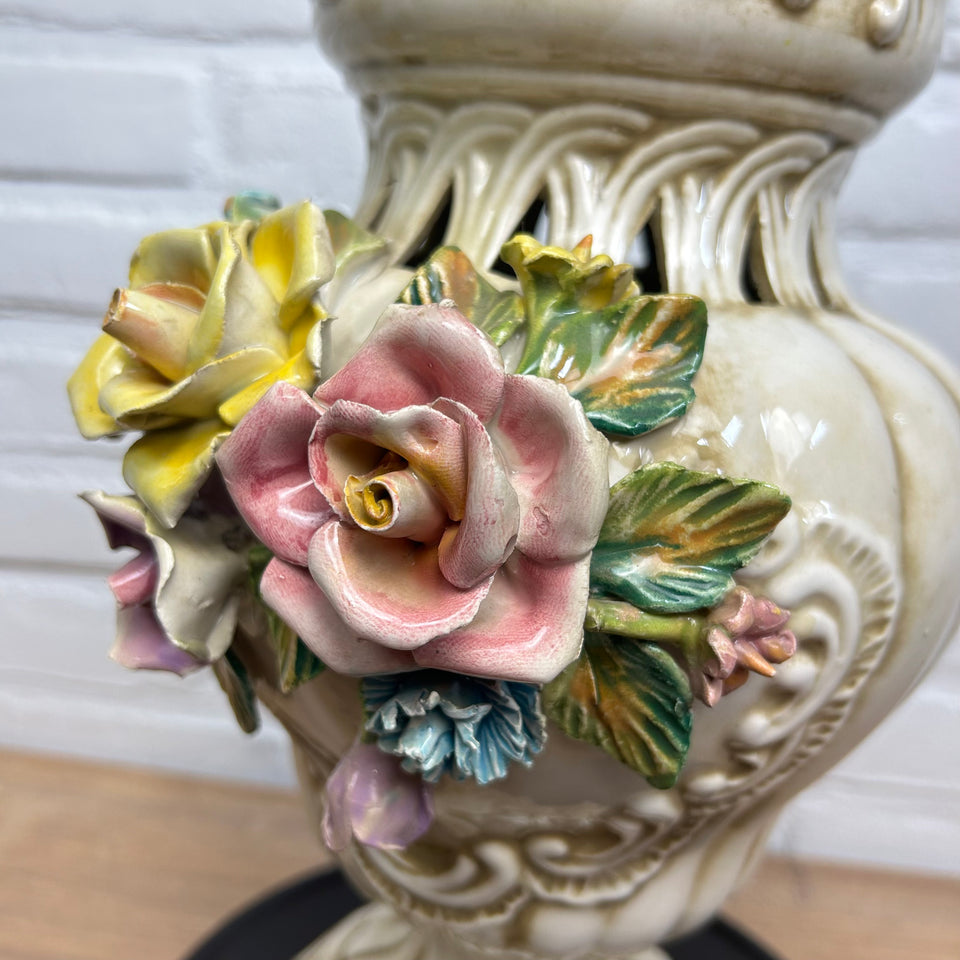

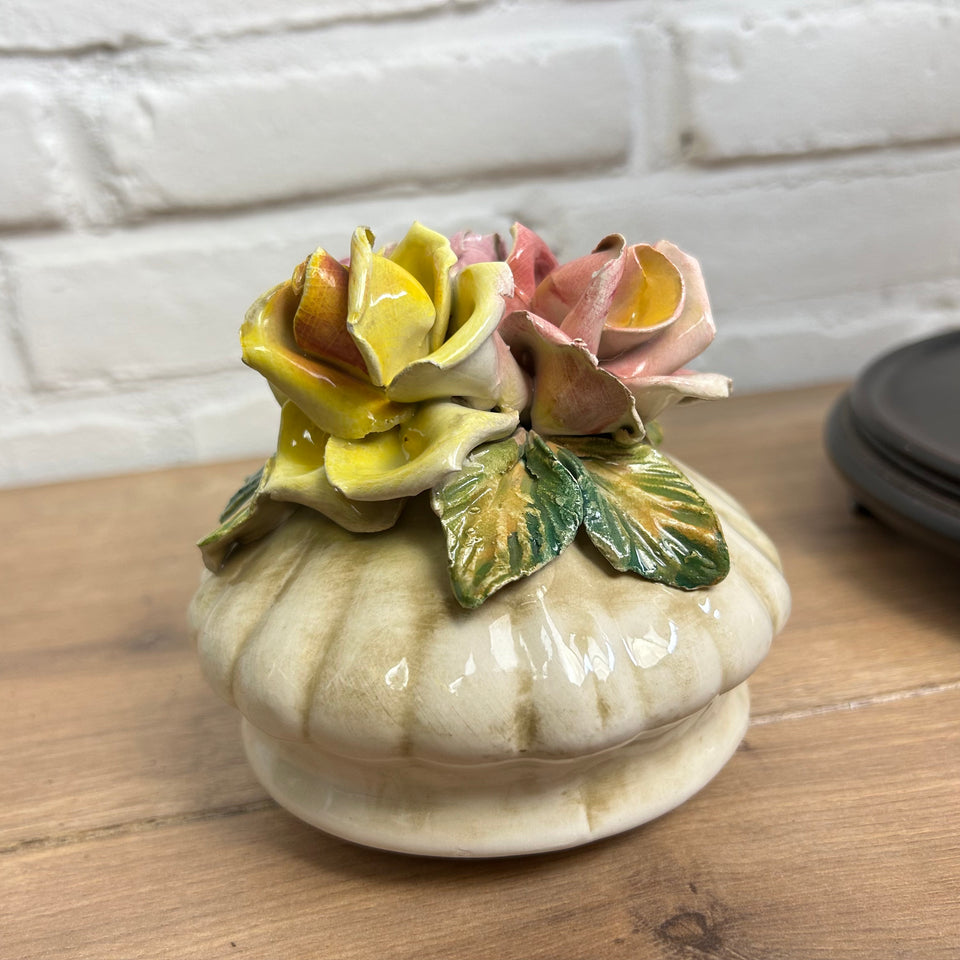
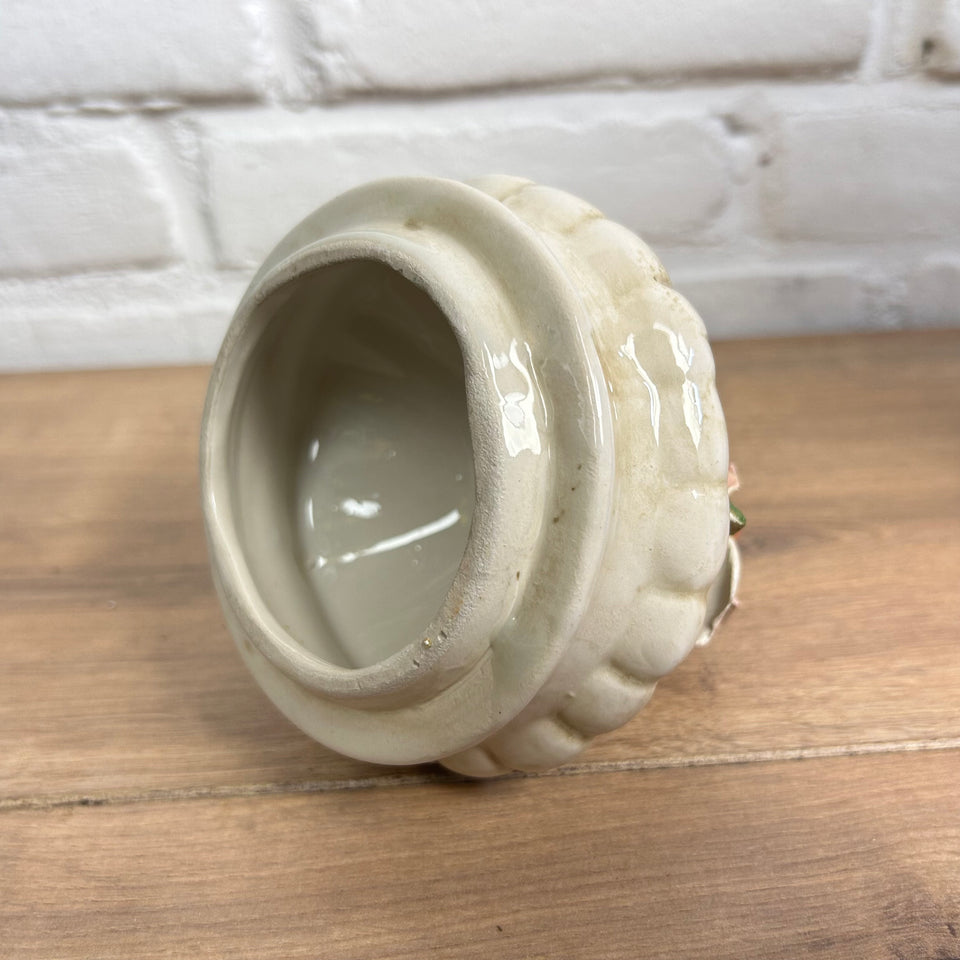
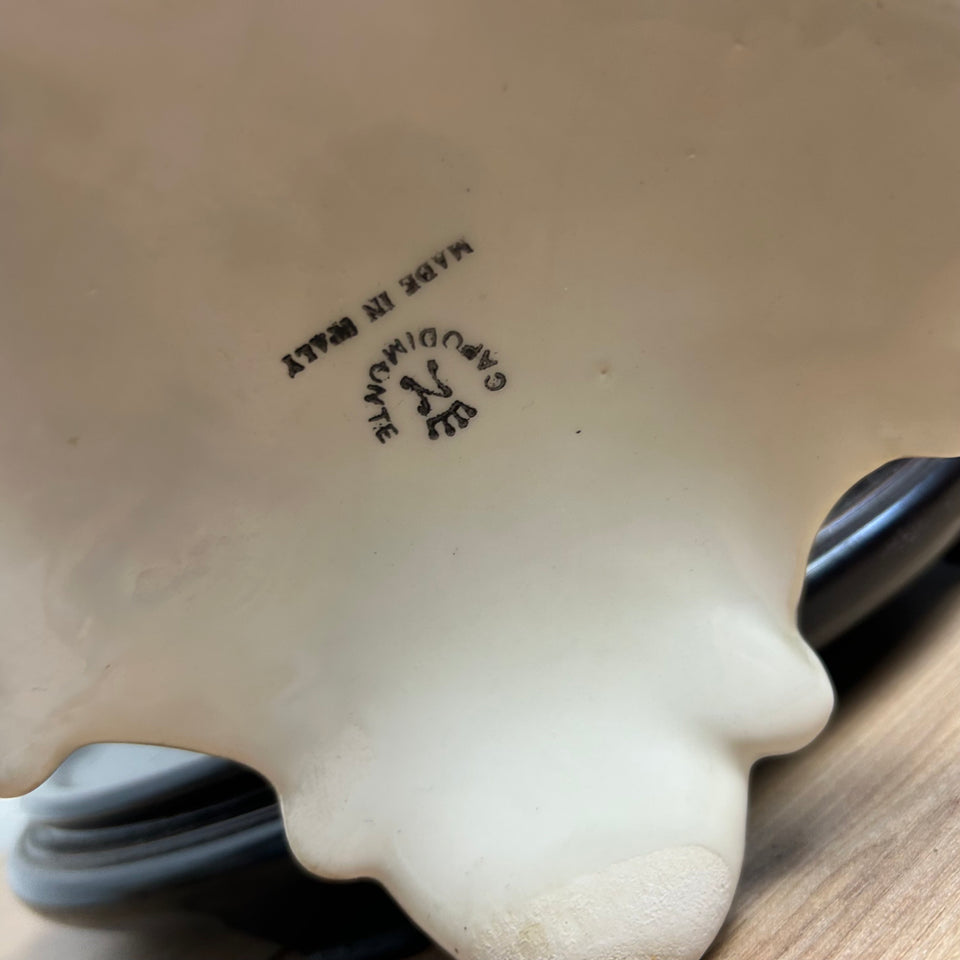

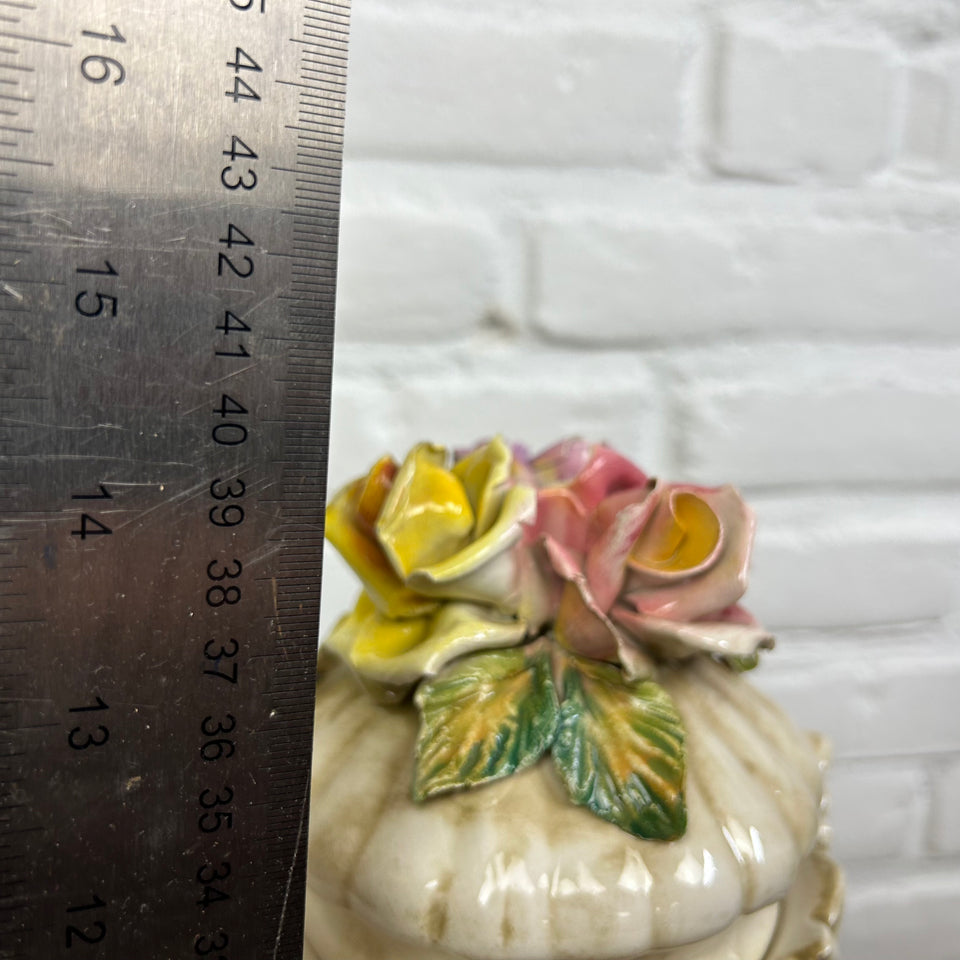
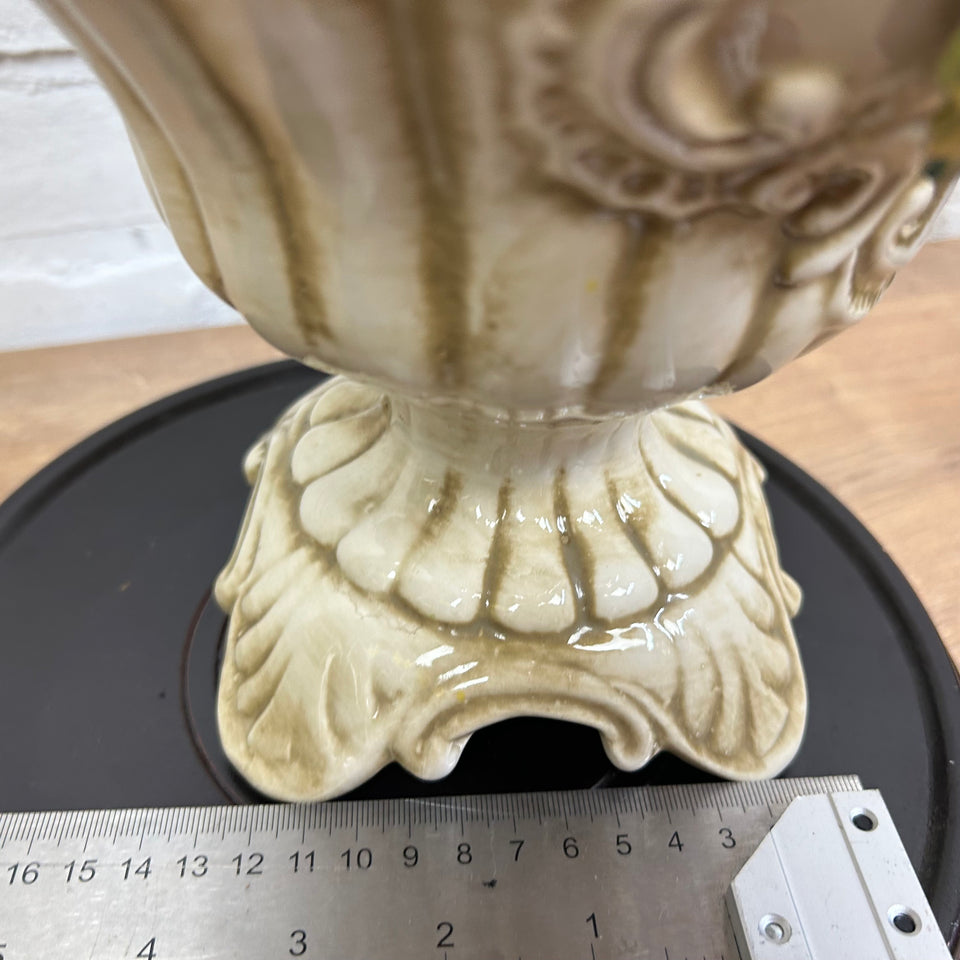
Large 40cm Capo di Monte Porcelain vase
A large 40cm Capo di Monte Porcelain vase with a floral centerpiece and can also be used as a container or urn.
Will be packed extra careful using a box in a box method, providing extra safety, although pickup is preferred.
The Capodimonte porcelain, one of the glories of Neapolitan homemade bind their origins to the splendor of the Bourbon dynasty. In 1743, King Charles of Bourbon and his wife Amalia of Saxony decided to found a center for porcelain production within their Reggia di Capodimonte, driven by the desire to achieve a porcelain similar to the German, produced at Meissen.
Thus was born the Royal Factory of Capodimonte, whose production was considered further, even greater than German and French. In fact, the particular mix of soft textured high-feldspathic praised the performance of miniatures made in the tip of the brush and created a special effect "under glass", which made these little works of art, unique in the world.
In 700' some important personalities like the sculptor Giuseppe Gricci, the chemist Livio Vittorio Scherps and decorator Giovanni Caselli gave an important contribution to the composition of the porcelain, improving its quality. In addition, Gricci created the famous little living room in porcelain of Queen Amalia, considered the most complete expression of the artistic style of Capodimonte.
But the most flourishing period of the Royal Factory of Capodimonte lies certainly in the last two decades of the eighteenth century when it was born a real art school led by Domenico Venuti, who made valuable services of porcelain, now preserved in the Museum of Capodimonte.
Currently, the Royal Factory of Capodimonte has become one of the largest museums in Naples which preserves the most famous pieces of the Neapolitan tradition. However, the craftsmanship of Capodimonte porcelain has never stopped, but continued to live until today, preserving the primacy of excellence around the world.
